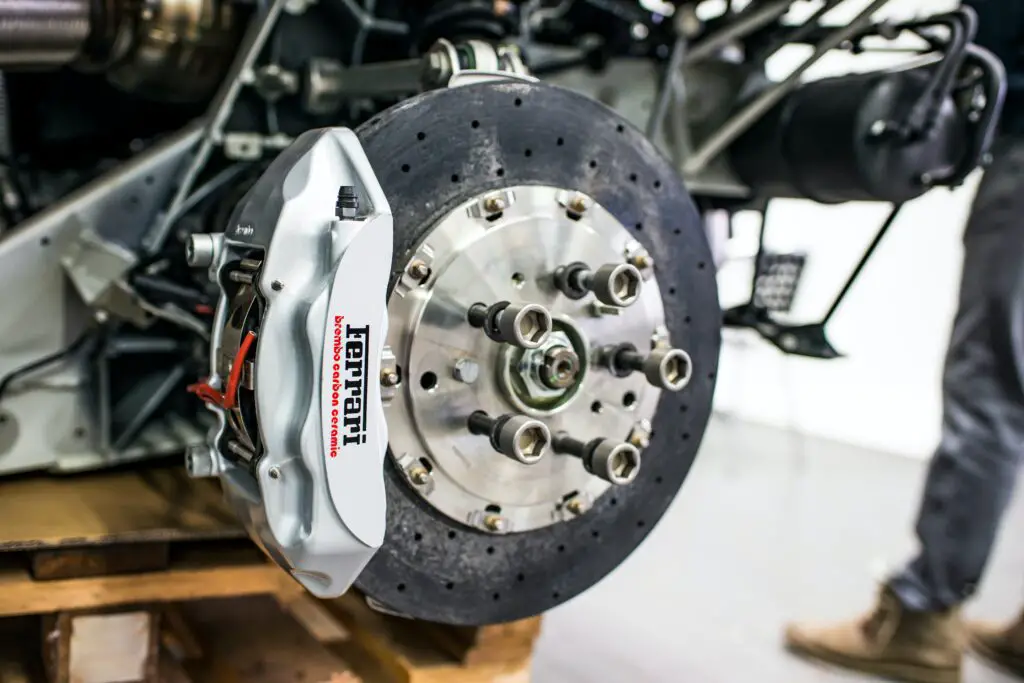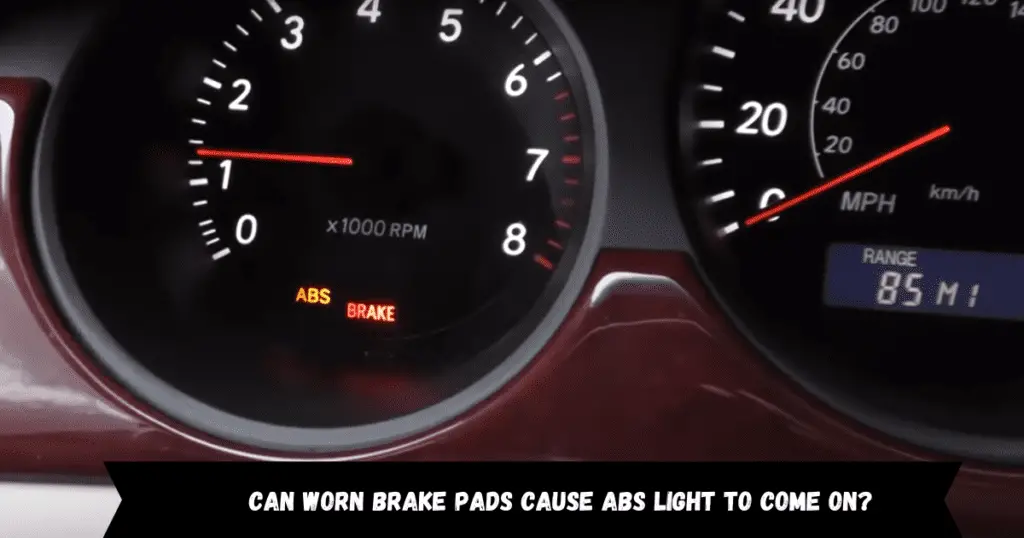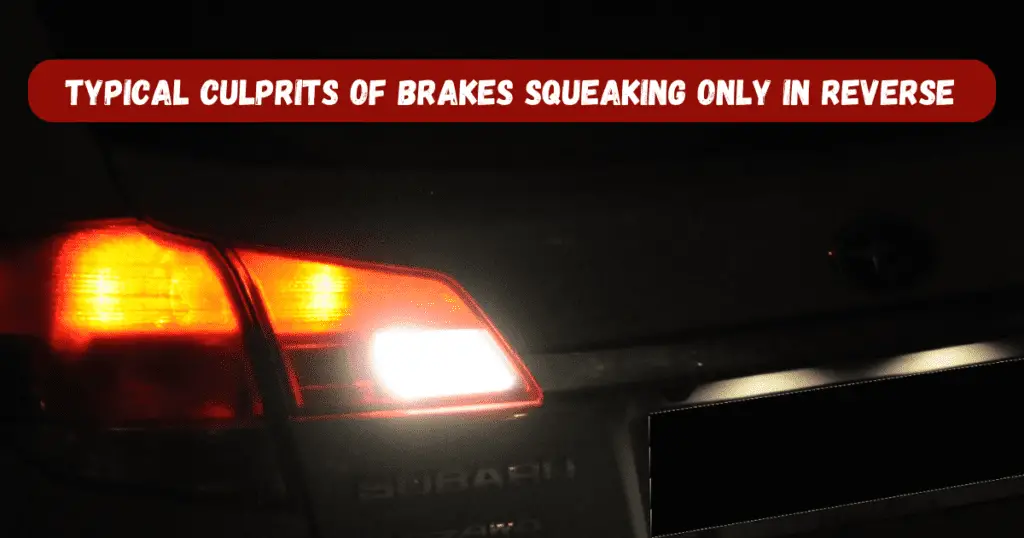A properly functioning brake system is crucial for safe driving. After all, it’s the component that allows you to reduce speed and bring your vehicle to a complete stop. So when issues arise with the brake fluid that powers this important system, it pays to catch them early. Read to learn the common signs that your brake fluid may be contaminated or bad brake fluid symptoms.
Brake Fluid’s Important Role
Before jumping into the symptoms, let’s do a quick brake fluid refresher. This hydraulic fluid has a few key jobs:
- Transmit pressure: It carries force from the brake pedal through the lines and hoses to actuate the calipers or wheel cylinders.
- Lubricate components: It helps pistons, springs, and other moving parts slide smoothly to prevent wear.
- Resist temperature changes: It has a high boiling point (usually >400°F) to handle braking heat without fading.
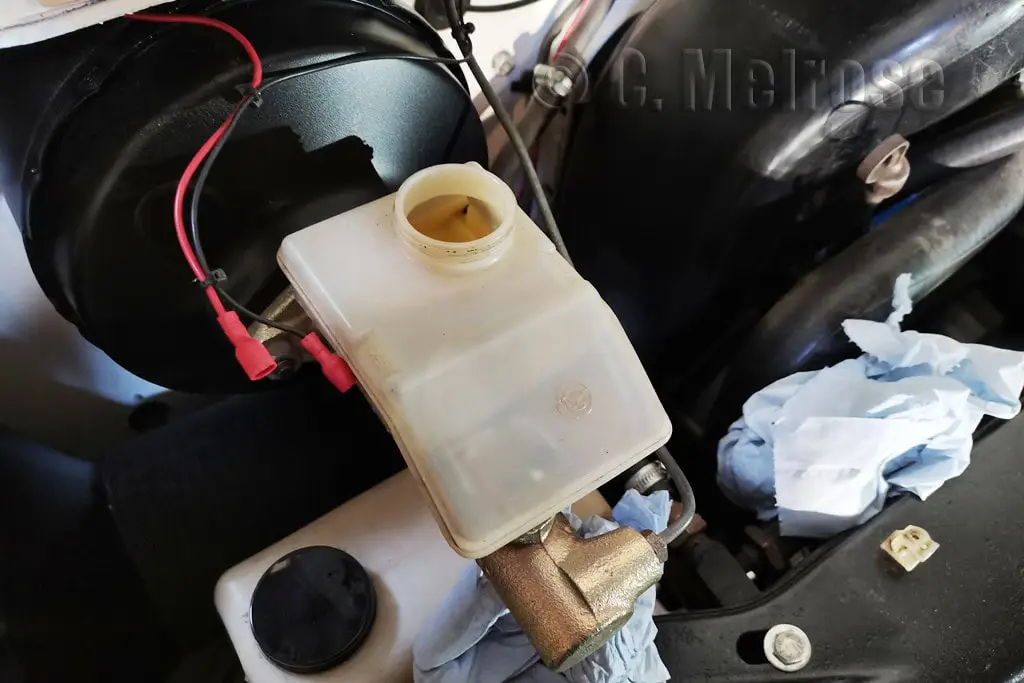
Over time, brake fluid absorbs moisture which lowers its boiling point and causes corrosion. Keeping fresh fluid flowing is key for optimal performance.
Now, let’s explore what happens when contaminants sneak in.
Top Contaminated Brake Fluid Symptoms
Like an unwanted party guest who overstays their welcome, contaminated brake fluid can cause all sorts of ugly issues. Here are some telltale signs of brake fluid that’s past its prime:
1. Dashboard Warning Lights
Modern vehicles have all sorts of fancy sensors, and some detect low brake fluid levels or pressure faults. So don’t ignore pesky warning lights on your dash that resemble a brake pedal or ABS — they’re trying to tell you something!
2. Spongy Brake Pedal
Over time, moisture buildup in the brake fluid causes internal corrosion and tiny air bubbles. These bubbles compress like a sponge when you press the brakes, leading to a soft and sinking pedal feel.
3. Brake Failure/Fade
As moisture content rises, boiling temperature drops and viscosity changes increase stopping distances. In extreme cases of overheated and contaminated fluid, vapor pockets cause complete brake failure or fade.
4. Leaks
Corrosion damage can crack lines, calipers, wheel cylinders, and master cylinders. Fluid then leaks externally or internally (tough to spot) causing low fluid levels.
5. Noises
With contaminated fluid, caliper pistons may not slide smoothly leading to squeals upon braking. The corrosion particles themselves also make some terrible scraping sounds.
6. Uneven Braking
If calipers on one brake circuit fail more than on the other, stopping power becomes imbalanced. This causes the vehicle to pull left or right under braking.
7. Rusted Components
As mentioned before, contaminated fluid corrodes the metal components it contacts like brake lines, caliper bodies, cylinders, etc. This leads to reduced component integrity and function over time.
8. Dark/Cloudy Fluid
Could you pop the hood and check the fluid reservoir? Healthy fluid is clear with an amber color, while contaminated fluid tends to appear much darker with debris floating around.
Now that you know what faulty brake fluid looks, sounds, and feels like, let’s get into more specific contamination causes and fixes.
What Causes Brake Fluid Contamination?
Before just topping off your reservoir with fresh fluid, it helps to get to the root of what contaminated it in the first place. This way, you can address any underlying issues for improved longevity of the new fluid. Here are some key contaminant-causing culprits:
1. Age & Use
Brake fluid is a sponge for moisture absorption. As it sits unused for long periods, it brings in lots of H20. Hard daily use also subjects it to high heat cycles allowing moisture intrusion over time.
2. Worn Seals & Components
Cracked master cylinder seals, caliper seals, flex hoses, etc. provide the perfect gateway for moisture and debris to sneak into the system. Any leak must be addressed before flushing.
3. DOT Grade Mixing
Similar to oil grades, there are different DOT brake fluid grades (3, 4, 5.1). Mixing these grades causes chemical reactions dropping boiling points. Use only manufacturer-approved grades.
4. Use of Non-Approved Fluids
Many fluids like mineral oils or silicone can seem generically similar and find their way into brake systems. However, they corrode internal components and boil more easily. Stick to vehicle-specific brake fluids only.
When Should You Change Brake Fluid?
Catching contaminated brake fluid early keeps repair costs down by minimizing corrosion damage. But how often should you swap out old fluid for fresh? Here are a few good rules of thumb:
- Drain and refill fluid every 2 years or 24,000 miles.
- Any time you replace brake pads/rotors or calipers. New pads churn up hidden gunk.
- When buying a used vehicle – who knows its service history? Better safe than sorry.
- If you spot any of the symptoms mentioned earlier. Don’t delay repairs.
Review your owner’s manual as some automakers recommend more frequent brake fluid service. Also, consider more aggressive flush schedules if you routinely tow or drive in mountainous terrain which subjects fluid to high heat cycles.
How Does a Brake Fluid Flush & Change Work?
bad brake fluid symptoms. DIYers can certainly tackle brake fluid flushes at home with some mechanical know-how. But for most owners, visiting a professional mechanic to perform a brake fluid exchange is easiest. Here are the standard steps:
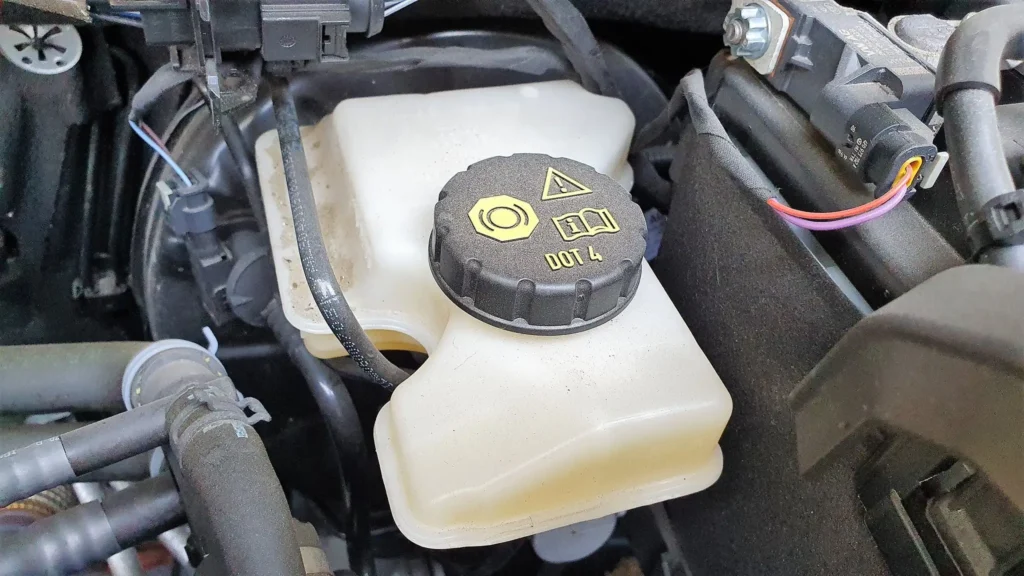

Step 1) Use a brake fluid exchanger to vacuum out the old fluid. This machine connects directly to the master cylinder for a seamless swap.
Step 2) Start the refill process with fresh, new brake fluid that meets factory specifications. Input the total system capacity to guide the exchange.
Step 3) Open bleeder screws to allow air pockets out of the lines starting with the wheel furthest from the master cylinder. Close bleeders once the new, clean fluid flows out.
Step 4) Double-check master cylinder levels and top off if needed. Road test the vehicle to ensure proper brake pedal feel and response before heading out onto public roads.
Some key reminders for DIYers – make sure to use manufacturer-approved fluid grades, handle chemicals carefully, and properly dispose of used fluid. Keep an eye out for any lingering leaks, noises, or issues during and post-flush.
FAQs on Bad Brake Fluid Symptoms
Now that we’ve covered all the dirty details on brake fluid contamination, let’s breeze through some common questions on the topic:
How do you know if your brake fluid is bad?
Warning signs include a spongy brake pedal, longer stopping distance, dark/cloudy reservoir fluid, brake noises, leaks, odd smells, and dash warning lights.
What happens if your brake fluid is low?
Expect poor brake performance with increased stopping distance. Complete brake failure can even occur in severe cases when there’s no fluid to actuate the pads or shoes.
What happens when brake fluid gets old?
Over time, brake fluid absorbs moisture which lowers its boiling temperature leading to brake fade. The water also corrodes internal brake components and can cause leaks. Sticking to fluid change intervals keeps things fresh.
What color is bad brake fluid?
While healthy, uncontaminated brake fluid has a clear, honey-colored appearance, contaminated fluid tends to look darker, murky, and contaminated with visible particles.
What is the average life of brake fluid?
Most automakers recommend flushing brake fluid every 2 years or 24,000 miles. However brake fluid can last up to 5 years if you don’t drive much and use high-quality products. Match fluid to your driving habits – frequent brokers should flush more often.
How quickly does brake fluid go bad?
Brake fluid can go bad in as little as 1 year because it absorbs moisture from infrequent driving plus ambient humidity through components. Aggressive drivers and those in wet, coastal climates may need to flush fluid yearly.
Let the Fluid Flow Freely
bad brake fluid symptoms. Hopefully, this breakdown better equips you to spot problematic brake fluid and know exactly what to do about it. Remember — just topping off low or contaminated fluid is only a quick fix. Identifying what caused the contamination, flushing the system, and fixing underlying leaks provide the best long-term health of your all-important brake system.
Here’s to clean fluid and happy braking ahead! Be sure to bookmark our page for helpful automotive insight anytime.

